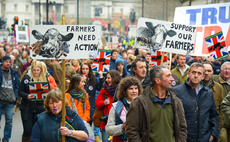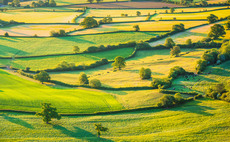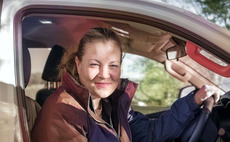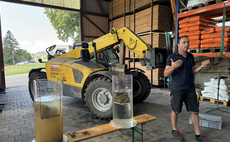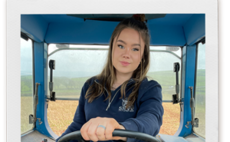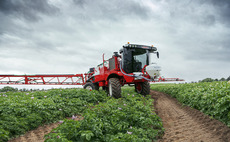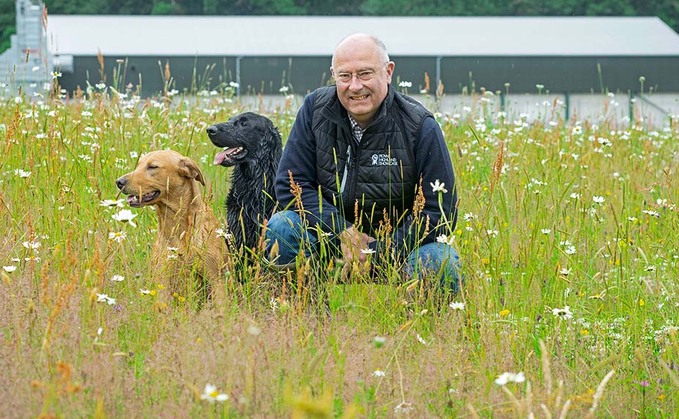
Showing what Scottish agriculture has to offer is Bill Gray's passion. Here he speaks to Ewan Pate about his role as chair of Scotland's most prestigious show and his farming journey so far.
Over its 237-year history, the chair of the Royal Highland and Agricultural Society of Scotland has been filled by many distinguished figures. Most have been able to enjoy the honour and the challenges in equal measure, but few have had to work as hard at the latter element than present incumbent Bill Gray.
Although he only took on the role in 2019, over his period in office, he and his board of directors have twice in succession had to cancel Royal Highland Shows because of Covid-19 concerns. But this year he had the added responsibility of helping to create a completely new replacement event. The Royal Highland Showcase, held between June 14 and 21, it was billed as an opportunity for livestock and equestrian exhibitors to compete in the showring but without spectators. Instead, the event was livestreamed to what turned out to be a truly international audience.
It has been widely hailed as a success, but Bill is the first to admit there was risk involved.
He says: "The scariest part was the few seconds before we hit the 'go' button on the opening morning. We had a great professional team of 100 people working on the livestreaming, but it was all unknown territory and a new type of event for many of the cameramen and commentators.
"In fact, it worked extremely well with people from over 90 countries viewing content over the seven days. It was great to hear people say it was the best thing we could have done. It let exhibitors show their stock for the first time in 18 months, but it also allowed people who would not have been able to come to Ingliston to see what Scottish agriculture has to offer. I pay great tribute to the team at RHASS for making it work so well."
Although he clearly has an interest in livestock, Bill is at heart an arable farmer. He manages 607 hectares (1,500 acres) of in-hand land on the Callander family's Preston Hall estate near Pathhead, Midlothian. He has been there for 27 years and built up much expertise in farming, but agriculture was not his first career choice.
Brought up in Belfast where his father was a surgeon, his first plan was to study medicine, but after spending three years at St Andrews University, he decided it was not the career for him.
A spell in Dumfriesshire as a student teacher leavened by plenty of rugby playing came next but it was a holiday on a family friend's smallholding in Exmoor at lambing time which kindled what was to become an enduring interest in farming.
"I then enrolled in the HND course at Auchincruive, aged 24, and probably benefited from being a bit older than the others on the course, many of whom I still keep up with. I won the RHASS silver medal which was my first contact with the society. After that I went to work with Michael Dart on a 1,500-acre dairy and arable farm in Oxfordshire. Then I moved to the Charlwood in Surrey as a trainee manager. It had difficult arable land, but this gave me a good grounding in soil management," says Bill.
His next move was to Benefield, near Peterborough, this time farming boulder clay.
"I was there from 1989 to 1994 which was just as the straw burning ban was introduced and leading, as it turned out, to the problems of controlling black-grass. I had a good social life, played rugby for Oundle and our daughter, Sarah was born there, so good times all round.
"Our next move was to Preston Hall, owned by the late Henry Callander. It is only a few miles from Haddington where my wife Janie was brought up, and we have been here ever since. Our daughter, Sarah, lives nearby so we are able to see our three grandchildren often."
Once again Bill found himself managing fairly heavy land. Much of it is classified as sandy clay loam Winton series. Some is Macmerry series and there are also areas of Darvel series which is sand and gravel.
He says: "By this stage in my career I had developed a real interest in soils. This is not generally suitable land for potatoes, but it is for cereals and we grow wheat for distilling, barley for malting and milling, oats for milling and oilseed rape. We did run a 50-cow suckler herd producing bull beef and store heifers. They did not really fit the system but seeing the benefits now for re-introducing livestock on to arable land we maybe should have kept them."
This open-minded approach to farm management came to the fore in 2016 when Preston Hall became an AHDB/QMS monitor farm along with nearby Saughland, a livestock unit owned by another branch of the Callander family and managed by Pete Eccles. Bill describes the collaborative programme as being ‘fantastically successful', a way of opening up discussion and knowledge transfer between the 40 to 50 attendees at each meeting. He and several others have also since formed a benchmarking group.
As an example of the benefits of the monitor farm approach, Bill points to a new 4,000-tonne grain drying and storage building at Rosemains Farm. Group discussions not only helped him in building design but also in making the decision to use biomass as fuel source for the dryer. A woodchip fired boiler supplies hot water to a heat exchanger fitted over the air inlet to the Allmet dryer.
The construction of the new store on a greenfield site has also opened up the opportunity to develop the old stone-built farm buildings into a suite of nine units suitable for light industrial or artisan businesses. And the rural setting, which is not too far from Edinburgh, has clear appeal with all nine units attracting tenants. But to add to all this work at home Bill has also had to spend a great deal of time fulfilling his RHASS responsibilities.
The 2022 Royal Highland Show will mark the 200-year anniversary of the first such event, held in 1822 on the site of what is now the Scottish Parliament. To be part of something so historic, he says, will be very special and is looking forward to being able to celebrate everything RHASS stands for including its charitable activities.
All being well, the 2022 show will be back to its normal format. There is, however, no doubt in Bill's mind that a digital offering in some form is here to stay. A major advantage is that the Ingliston showground has the necessary infrastructure thanks to the installation in 2016-17 of fibre optic cabling around the whole site.
"It has been a strange time to be in the chair. We have had to miss two Royal Highland Shows and had to hold all our board meetings over Zoom. Although we have had 100 per cent attendance at these meetings, we have all missed the social interaction. My term of office should have ended this month, but I have been offered the opportunity to stay on as chairman for an extra year which is a great honour," he says.











